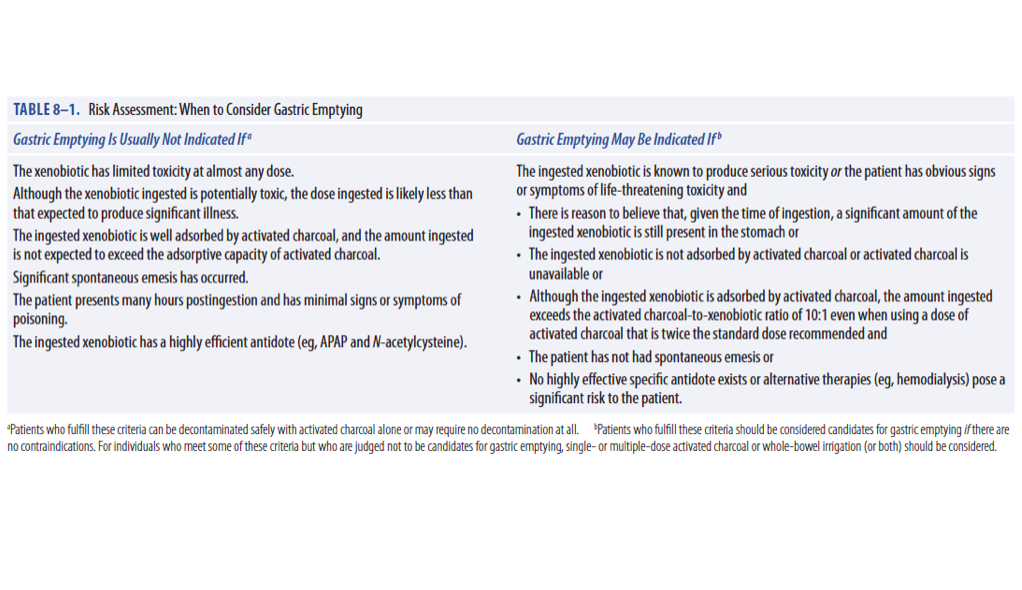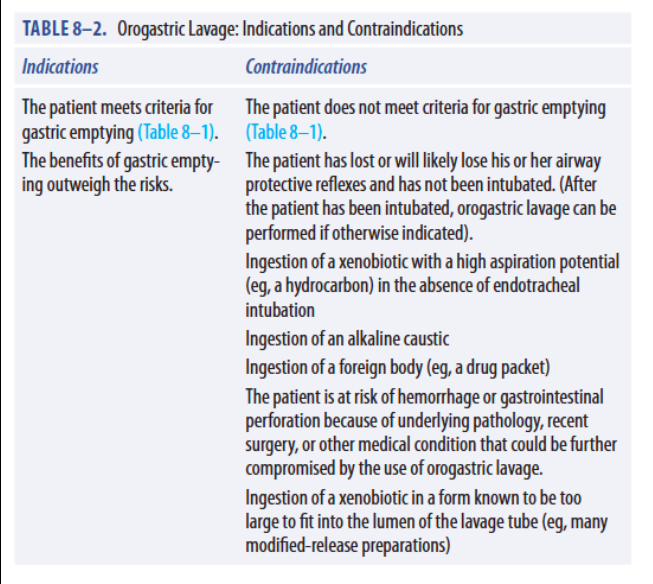Definition: Removal of potentially toxic contents from a patient’s stomach. After the cessation of syrup of ipecac–induced emesis, orogastric lavage is the sole remaining clinical option for gastric emptying.
Goal of Procedure: To safely and effectively remove some portion of an ingested dose of toxin in an attempt to prevent or mitigate toxicity.
Background: Orgastric lavage is a controversial topic. In the past, it was used liberally in patients with a variety of reported toxic exposures. In recent times, it is performed rarely in the developed world, as the benefits are not clear and supportive care has significantly advanced. In spite of this change, there may still be a role for orogastric lavage in a small subset of patients presenting early after a life threatening toxic ingestion.
Orogastric Lavage Risk Assessment

Gastric Lavage Risk Assessment (Goldfrank’s Toxicologic Emergencies Ch 7)
Indications + Contraindications for Orogastric Lavage

Gastric Lavage Indications (Goldfrank’s Toxicology Ch 7)
Technique for Performing Orogastric Lavage

Gastric Lavage Placement (Goldfrank’s Toxicologic Emergencies Ch 7)
Take Home Points
- Orogastric lavage may still play an important role in treatment of the overdose patient. Do not perform lavage if the ingestion has limited toxicity at any dose or the ingested dose is unlikely to cause significant toxicity.
- Strongly consider orogastric lavage in a patient who has taken an overdose of drugs that are particularly toxic, suspected extreme doses associated with high morbidity/mortality and do not have easily available and effective antidotes.
- Secure the airway prior to placing the lavage tube to minimize aspiration risk.
References
Gude AB, Hoegberg LCG. Chapter 7. Techniques Used to Prevent Gastrointestinal Absorption. In: Nelson LS, Lewin NA, Howland M, Hoffman RS, Goldfrank LR, Flomenbaum NE. eds. Goldfrank’s Toxicologic Emergencies, 9e . New York, NY: McGraw-Hill; 2011.
